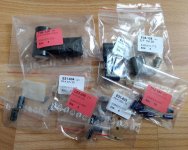Glen M
Experienced Member
I picked up a Macintosh Classic today but it badly needs a recap. Thing is I can't for the life of me find a capacitor list for the main board.
Would anyone happen to have a list?
I really didn't expect this to be so hard to find.
Would anyone happen to have a list?
I really didn't expect this to be so hard to find.






